When you’ve created the perfect wooden project and you’re ready to decorate it, you might automatically reach for a can of paint. Although wood is fairly forgiving, ask yourself a few questions before you start slapping or spraying that glossy coat of paint:
- What are you painting?
- What kind of wood is it?
- How do you want the end product to look?
- Have you done any prep work to the wood beforehand?
Just a few moments of thinking can save you the trouble of redoing your work or prevent you from having to apply multiple coats to get the finished product to match your vision. Before you put brush to the surface, consider what kind of paint to use on wood.
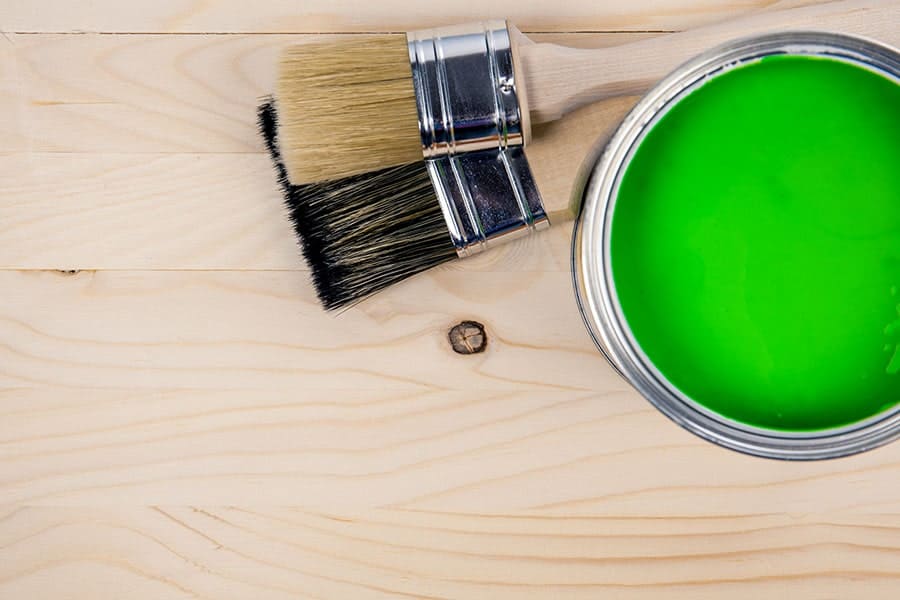
Types of Paint for Wood
You may think that paint is paint, but the truth is that there are several different types of paint that you could use on your wood project. Knowing more specifics about each type will help you to choose the best paint for your needs.
Oil-Based Paint
Many people choose oil-based paint because of its durability when you’re finished with your project. You’ll find that oils create a smooth surface when the paint has dried, giving you a nice matte or glossy finish, depending on the type of paint that you select. Even better, most projects completed with oil-based paint don’t require a top coat to get this sheen.
However, to enjoy that smooth finish, you have to use a high-quality paintbrush rather than a roller. Choose one that specifically claims to work well with oils to get the best results with this somewhat temperamental paint option. Make sure that you are painting directly on the bare wood or on the primer with this type, too, since oils don’t mix well with a latex underneath layer.
Latex Paint
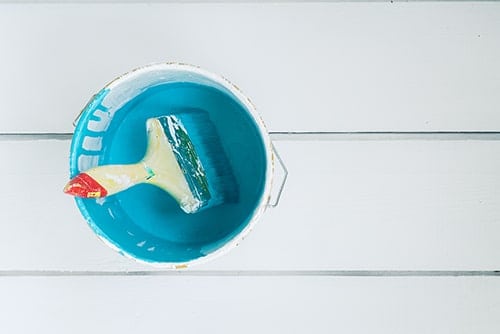
You can find that it’s much easier to work with latex paint than oil-based paint. Of course, the ease of use translates to reduced durability and to greater instances of visible brush strokes in your finished product. Try mixing in a little Floetrol into your paint source to reduce the number of visible brush strokes.
Depending on your project, consider what type of finish you want to your latex paint. Generally, a gloss or semi-gloss won’t need a topcoat, but a satin or matte finish will take a top coat for the best results. Latex paints can be cleaned with simple soap and water, making completion of the project a breeze.
Water-Based Paint
Most paints sold in hardware and big-box stores are water-based because they are possibly the easiest of all project paints to use. You don’t need to do a pre-treatment of the wood unless it was previously painted with oil-based paint, and there is generally no need to fear mildew growth or high levels of odor. Water-based paints dry very quickly, and the color typically resists fading and cracking. Common types of water-based paints include chalk paint and milk paint.
Acrylic Craft Paint
Depending on your wooden project, you may be able to use acrylic craft paint. This is best for small projects or for those that are especially artistic in their appearance. Acrylics dry very quickly and have almost no odor. They are available in a wide range of colors, finishes, and decorative options. For example, you can easily mix acrylic paints to create your own colors, and they are fairly simple to use to create special color effects like ombre.
Acrylic craft paints are inexpensive and can be purchased in a variety of quantities to match the size and scope of your projects. With this type of paint, you can reuse your brushes again and again if you make sure that you wash them out right away after use.
Priming wood
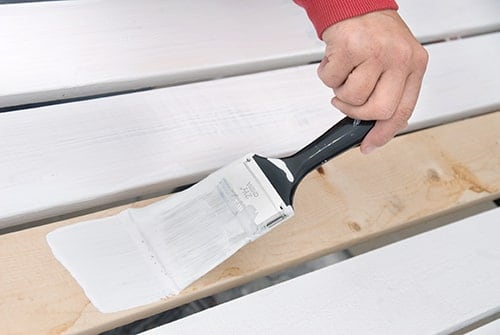
Whether you’re planning to paint finished or unfinished wood, you should really apply a layer of a good primer. Wood is an organic compound, and it tries to absorb any paint that you apply, which will affect the quality of your finished product.
Consider the type of wood you are painting to determine how much primer to use as well. Woods like knotty pine that are dark and tannin-rich need primer the most. However, a primer on any type of wood will provide a more even foundation and will give you a more uniform paint finish to your project.
Choosing the Right Paint
Once you know the different types of paints available for your wood project, you still need to know which type is best for different types of projects. Choosing the right type of paint can make the difference between a messy amateur project and a looks-so-good-it-must-be-professionally-done project.
Don’t forget to pay attention to the various sheens for latex paints in particular. You can choose between matte (flat), eggshell, satin, semi-gloss, and high-gloss options, listed here in order from lowest to highest luster. Keep in mind that higher sheens often cost more than matte options. Milk, chalk, and acrylic paints are generally more matte in finish.
Wooden Furniture
When you’re working with wooden furniture, your choice of paint type can depend greatly on the finished look that you want to achieve. For example, choose chalk or milk latex paints to create distressed furniture. With a matte finish, milk latex paint in particular distresses easily through paint cracks and flakes, creating that weathered look that many people want for their dressers, sideboards, and headboards. Try chalk paint, which doesn’t distress quite as easily, for items such as tables and wooden coat racks. Because chalk paint is tougher to flake, you’ll have more control over the amount of distressing on these pieces.
If you’re looking for a smoother finished product, try oil-based paint on your wooden chairs, tables, and other frequently used household furnishings. Oil paints dry quickly, so you won’t lose much time without your daily furniture. Even better, this type of paint is strong, so it’s less likely to dent or scuff when you use it on your table or chair’s legs.
Wooden Cabinets
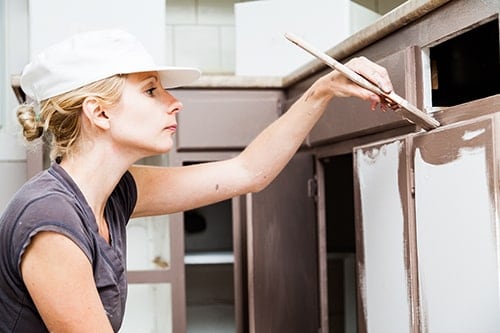
If you’re wanting to paint or repaint your wooden kitchen or bathroom cabinets, you’ll want to be very careful about the type of paint that you choose because of the unique conditions in these rooms. Bathrooms deal with a lot of moisture and steam from the bath and shower, and kitchens also face moisture from boiling water and other cooking functions. Because of these conditions, be aware that your wooden cabinets are more likely to mold or grow mildew on their surfaces. Therefore, you need a pint that is moisture-resistant and that repels rot.
Look for oil-based paint in a semi-gloss or high-gloss to create a smooth, non-porous finish that will prevent water from being absorbed. The smoothness of this finish also allows you to more easily clean the surface when you splatter food or other materials onto the front of your cabinets.
However, if you’re planning to paint the interior of these cabinets, consider using a flat or satin sheen on the shelves because it is less sticky and is stronger for holding the weight of dishes or soap bottles.
Wooden Floors
When you’re planning to paint your floor, you need to be very careful to choose strong paint that can handle stomping shoes, sopping umbrellas, and scooting furniture. Floors can be damaged in a matter of seconds from any number of different foot-traffic issues. Using latex paint is the best choice, especially in a semi-gloss or high-gloss finish. This smooth finish will make it easier to sweep and to mop.
If you can’t use latex paint immediately on the wood, use an oil-based option but follow it with a polyurethane topcoat for wooden floor to lock in the paint color and to prevent damage. Allow plenty of time for your floor to dry before you use it, or it could be sticky.
Wooden Trims
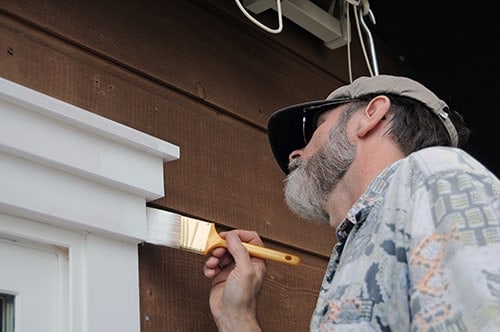
For interior trims like baseboards and door casings, choose oil paint for its rigid durability. Wooden trims close to the floor or around doors in particular often face dings and scuff marks, and oil-based paints are strong in protecting against this damage. This type of paint is also smooth for dusting and regular cleaning.
For decorative wooden trims with scrollwork or other ornate decorations in crown molding, choose a latex paint that will more easily get into the grooves and recesses of the wooden pattern. This will give you more uniform paint coverage. A flat or satin latex will give you smoother coverage and won’t require frequent cleaning to look good, but you need to start with a smooth surface that has been well-sanded. Decorative trim is notorious for showing a poor paint job, so prep the surface thoroughly before you carefully paint the molding.
Bare Wood and Wooden Decks
Before you paint bare wood, use good-quality wood putty to make sure that you fill in all dings and deep gouges to create a smooth surface. Fill the spots, sand down the putty once it’s dried, and then prepare the surface for primer. For bare wood, the primer is necessary to create a uniform surface on which to add the paint. Choose a primer that is specially formulated for either indoor or outdoor surfaces, depending on what you’re painting.
Wooden Knickknacks
Wooden knickknacks are often painted, and the type of paint you use is often dependent on the size and scope of the project. Try oil-based paint for larger wooden jewelry boxes and photo frames, but switch to craft paint for smaller decorative knickknacks that require multiple colors. You may want to consider a polyurethane topcoat to really lock in the paint color and quality before you display your wooden knickknack.
Conclusion
There are several different types of paint, and knowing what kind of paint to use on wood can seem daunting at first. However, consider your wood project to inform your choice, and you’ll choose the type of paint that will withstand daily use and cleaning. Definitely, the best paint will give you the best results. With these tips, you’ll end up with a wooden project that is exactly what you were hoping to create.
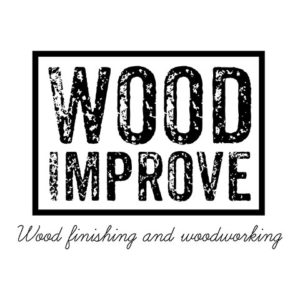
I want to make a growth chart for my kids. What kind of paint is best for a wooden growth chart, that you will need to write on and not have it fade? Also, what do you recommend writing the dates of kids measurements with so they won’t fade with time?
Hi Hayley.
All paints will fade over time; it’s really a question of how long. A good oil-based enamel is durable, has a better sheen, and, as it takes a while to dry, will level out to a smooth surface. The drawback of an oil-based enamel is that it has a stronger smell than water-based enamels and requires mineral spirits for cleanup. That said, I’d choose an oil-based enamel purely for durability.
I’d use a paint marker to write on the paint, then seal it with a sealer spray can for permanence. Sharpie makes oil-based (https://geni.us/skzkV) paint markers in various colors.
The clear spray can be a permanent artist’s spray that doesn’t yellow (like this: https://geni.us/elB86CB). Start with a light dusting and then build up using a few layers to ensure the spray’s solvents don’t affect what you’ve written.
Hi, do you have any recommendations for a high gloss finish suitable for a hard wood front door (from Victorian era)? Thanks in advance for any help/advice you can lend. Kind regards, chris.
Hi, Chris.
My preferred solution is not the cheapest option, but it looks superb and lasts a long time. I’d use spar urethane. It’s designed for boats and harsh sea conditions; it offers great UV protection and a high gloss finish. Here’s a product I like, but there are many you can choose: https://geni.us/byya
What is your recommendation for exterior timber (meranti – porous) that is exposed to the weather (Cape Town – driving rain in winter and baking sun in summer).
The wood was previously painted with an oil-based enamel paint, but that is not lasting too well. I am considering stripping the timber and going back to a penetrating sealer again.
Will that be worth it in the long run, or should we just stick to the enamel paint?
kind regards and thanks for the advice!
Henri
Hello.
I would suggest epoxy sealer with exterior varnish topcoats for outdoors with harsh conditions.
It takes a lot of time and is labor-intensive but is worth every bit of it, the epoxy protects wood from moisture due to which wood doesn’t swell and shrink.
This gives exterior varnish long life because it no longer has to stretch and shrink with the wood.
As exterior varnish has UV protection so it protects epoxy from rapidly deteriorating. They work great with each other and will last longer.
If you want to have an easy fix you can stick with enamel paint that is weather proof and good quality like this one by Vaspar.
Hi,
I’m kasun from Sri Lanka. I started a business of wooden wall art. which paints should I select ?
Hello Kasun, glad you asked.
There are many types of paints that you can apply on wood and will differ with the task at hand. Some type of paints are:
Water-Based Paint, Acrylic Craft Paint, Latex Paint, Oil-Based Paint.
All of these paints will have different textures and different types of finish to the end result, there is no answer that fits all cases and above mentioned paints are used for a different application so you have to choose carefully before you choose the type of paint.
For art, I would recommend Latex paint as arts are seldom touched. These paints can be tinted to any color you like, it will dry faster than oil based paint and will hardly show brush strokes or marks. you can choose a paint like this one by Rust Oleum.
Hi, i want to paint the doors of my home by myself what kind of paint should i go? Water based or oil based? I would like to have a gloss finish and also to clean with water if dirt sticks on it!
Hi Arunava, oil-based paint is very durable and gives a good appearance, it is worth using when the coating is subjected to a greater load.
The downside is that it dries completely and has an unpleasant odor until it dries completely (sometimes this is very unpleasant) you just have to have the necessary time to dry. Washing brushes is also a bit tedious and expensive.
On the other hand, water-based paint dries quickly and has no unpleasant odor. Water-based paints also have a glossy finish and are water resistant. It is true that they are not as durable but it is durable enough for doors.
There is no right or wrong choice, everything has its advantages and disadvantages, you have to choose according to your needs. If you want a really nice and strong finish, choose an oil-based paint. If you want to finish painting quickly without unpleasant odors, choose water-based paint.
Hi,
I am working on my new wooden study table and I dont have any idea on what kind of paint should I use. I want it to be glossy but not too much and I want it to be durable as well. Can you please recommend me on what should I buy?
Thank you!
Hi Jenny,
it’s good to imagine the end result before you start.
If you want to have a thick layer of paint (without seeing the wood), you can use latex paint like this one by Rust-Oleum.
For greater durability you can cover with polyurethane varnish semi-gloss like this one by Minwax, this varnish is very durable (suitable even for floors). When you apply it, work in a ventilated place.
Polyurethane varnishes are very strong but have a tendency to turn yellow. For example, if you apply varnish on snow-white paint, it will give a yellowish tint. In darker colors, this is not noticeable.
If you want the wood to be visible, you can simply apply more layers of the same varnish.
Another option is to add color to the wood and make the wood visible again. In this case, use instead of latex solid paint wood stain like this by Minwax, then seal again with polyurethane varnish.
Before applying any paint, make sure that the wood is well sandy and then dust-free. Read the manufacturer’s instructions for use and follow them.
I want to re-paint a box which I put my recling boxes in which stays outside all the time . It’s been painted with a water based paint when I first bought it .Can you please recommend a make of paint which will do the job .Thank you
I would recommend an exterior oil-based paint like this one by Rust-Oleum for the best result. For even better protection you can seal it with a polycrylic or polyurethane seal or even a wood finish by Behr that helps protect from all weather. If you decide to use a sealer I would get paint by Rust-Oleum that isn’t oil-based for the best adherence.
What can I use on wooden pallets?
If you are using the pallets outside, I would recommend an oil-based outdoor paint by Rust-Oleum or Kilz.
I am painting a wood pine door. I want to paint art on it. Can I sand it down, prime it with gesso and then use my acrylic art paint to paint on it? I am trying to make sure the paint will still move. I am going to be sponge painting a lot of it.
That should work as long as the surface is clean and dry. You can always test it on another piece of wood to see if it works the way you want to, if not I would use a primer by Color Place or Glidden at Walmart or Amazon.
I want to paint a wooden China cabinet. I don’t want it to look glossy and should not turn black after a few years. I want it to be durable as well. Which paint type would you recommend?
Any paint will work but I would suggest an oil-based paint. Oil-based paint has better durability than latex paint and gives you a smoother finish. Oil-based paint can be a little harder to work with compared to a latex-based or a water-based paint but either one will work. If you decide to go with oil-based paint and you don’t want that shiny look, I would suggest getting a matte or flat paint. A good brand for this paint is Rust-Oleum. If you don’t like the texture of the flat paint you can always seal it with a matte spar varnish finish, which will protect the wood from anything even sunlight.
Hi William,
Thanks for all your advice.
I am going to be painting the inside of a van that we are doing up. It is an old library bus and all inside walls are currently plain MDF wood. To brighten it up I want to paint it all white, what would you suggest are the best primers and paints to use?
Thank you so much.
Sunny
Hi,
Choose KILZ Premium Primer and Rust-Oleum Latex Paint. Those should work great.
I want to fix up a wooden hallway stand with a little cupboard . It has been left out side for a couple of years and I want to sand it a paint it . It is bare wood . What paint and sand paper do I use . Thank you in advance .
Hi Suzye,
Check out Rust Oleum Latex Paint. It’s suitable both for interior and exterior use, got plenty of colors. You need to use a 180-200 grit sandpaper before applying this paint.
I am creating wooden racks for rolls of fabric for a sewing workroom. The wood is bare and has never been painted. I need to ensure that the paint will not rub off on any fabrics. Suggestions?
Hi Terry,
Try Rust-Oleum Latex paint. It isn’t an oil-based paint (which are the most durable) but still pretty durable and resists chips.
Hi,
I have a wooden desk that is a gross orange wood color. There is also some marker and such stained on it. Should I just prim it and then use an oil-based paint?
Hi Raquel,
Yes, use a primer to hide wood color, markers, and stains and then just paint it. That would be enough.
Hi William,
I am trying to paint a wooden high chair, and wood dining chairs to match. The high chair came from a restaurant and has a greasy smell. I was going to sand it down the best I could and try to get the odor out. What is the best kind of paint to use? Would I also need to sand the dining chairs down?
Hi,
Yes, it’s better so sand down the wood to get better adhesion. Furthermore, I would highly recommend to prime the wood before painting to hide any stain and seal a greasy smell. You can use KILZ Restoration, this primer especially designed for strong smells and stains. As for paint, you can use Rust-Oleum Painters Touch Latex. Don’t forget to sand the primer too before painting since Rust-Oleum requires sanding!
hi William
I usually paint on an MDF wooden panel with an enamel gloss finish paint, so now which another paint is advisable to paint on which gives a matte finish and it will be dust protected, I know of eggshell and acrylic paint but which is best
Hi,
I can only recommend Rust-Oleum Chalked Paint which is ultra-matte, but this paint is for interior use only. Can’t remember some matte option for exterior wood.
How to protect Enamel Paint in last coat without damaging the paint and what I will use
Hi Michael.
You can use some clear polyurethane. What do you mean by damage? You will need to sand the paint before applying topcoat for better adhesion.
I need to paint wooden straps that cove a pit in a semi basement garage. Does anyone recommend water paint?
Hi Patrick,
What comes to my mind is Montage Signature. It’s water-based.
i want to repaint a old wooden bookshelf. Do I need to scrape the old the paint off before re-painting? i was thinking of using a white primer to cover up the old paint and then apply fresh paint over it. Can you suggest any other method of doing this? And can you suggest the type of paint I can use?
Hi,
No, it isn’t necessary to scrape all the old paint. You can just sand it for better adhesion and then prime it. Check Rust-Oleum latex or chalk paint.
I have a wooden wardrobe, a small one. It’s already painted with oil based. I want to paint art on it. Will acrylic based paint be suitable on an already oil painted wood? If not what should be used?…
Hi,
It isn’t a very good idea to use acrylic over oil-based paint. Instead, pick some oil-based paint.
I want to paint an old interior pine door. It looks like it’s bare wood although there may be a Matt seal of some sort, although it looks like bare aged knotty type wood. We would like a semi transparent finish so that we can still see the knots and grains through a white or light colour. Can you advise on a paint for this please?
Hi,
I ain’t sure that there is such a thing like semi-transparent paint, though there are other clear finishes like polyurethanes, shellacs and more. Although you may try white or some other light chalk paint, for example, Rust-Oleum.
I am painting on wooden 2 by 4s to make signs what’s the best paint I should use?
Hi Sol.
Check Rust-Oleum Latex. It’s great for interior/extetior small/middle projects.
I am making a wooden table and I have done some carving on the table top and I want to know if a water acrylic based paint is suitable.I plan to mix the paint together and run it into the grooves on the table to get a abstract effect and seal the top with a clear sealant for wood
Hi Paul.
Yes, it is. Make sure the paint is completely dry before applying a sealant.
What’s the best paint I should use for painting a wood surface that is for a Garbage bin.
Hi there.
I suppose the garbage bin is going to be outdoors. I can recommend some exterior paints. I have an article about exterior paints you may take a look at. You may use Rust-Oleum Painter’s Touch or Kilz for siding.